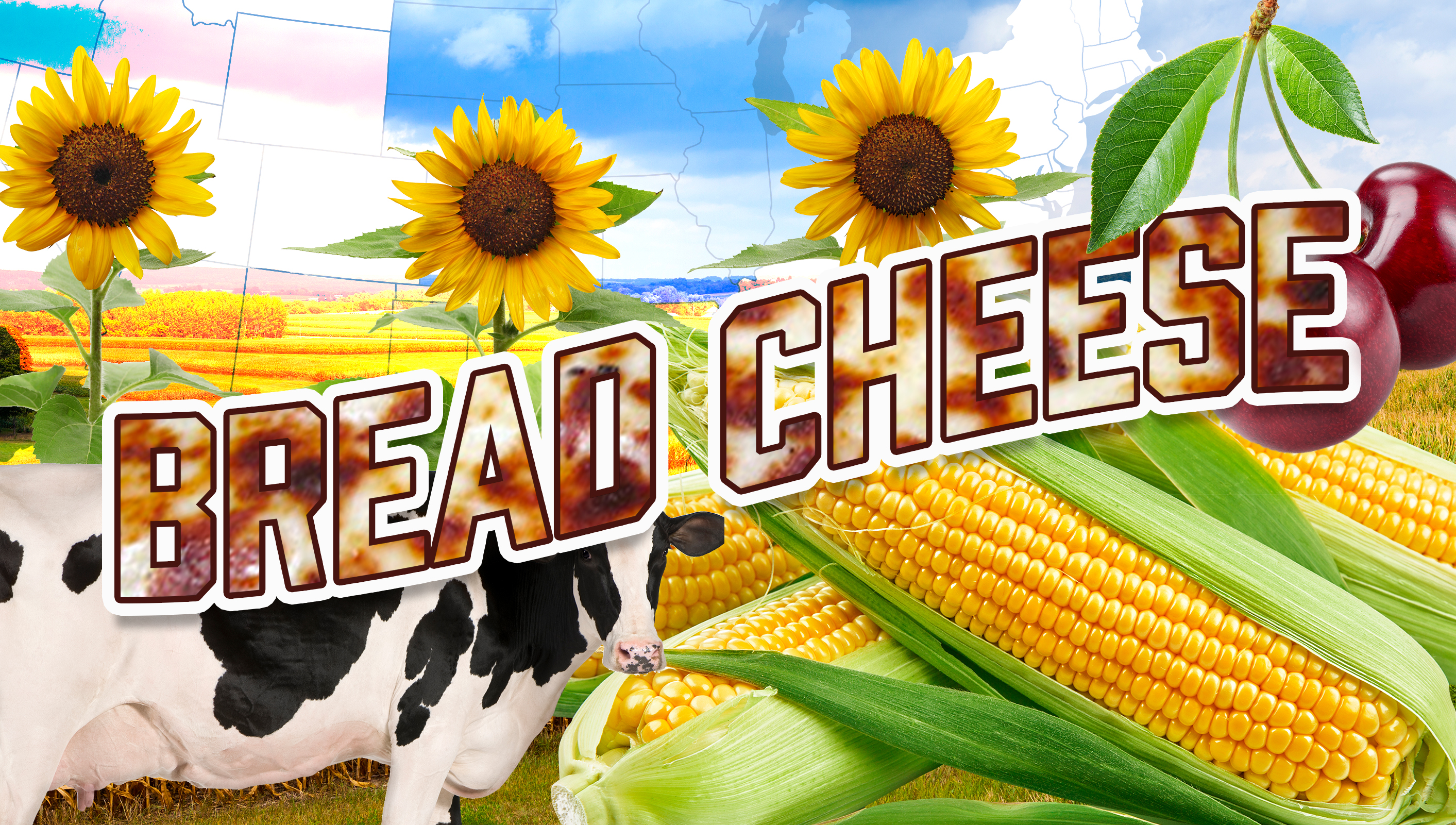Yes, Bread Cheese Is Real, And It's Spectacular
Every summer, Brunkow Cheese comes down to Chicago from southwestern Wisconsin and sets up shop in a few of the bigger farmers markets in the city. Follow the smell of stinky cheese, and you'll end up at the back of a very long line of people waiting for Brunkow's signature ham and raclette sandwiches on baguettes. After you place your order, you can spend up to 10 minutes waiting for your sandwich (totally worth it, by the way). There are several ways to amuse yourself: people-watching, observing the skillful way the cheese man on duty scrapes melted raclette onto the baguette, or eating samples of bread cheese that have been laid out on a griddle. (Toothpicks are provided for this purpose.) All of these are satisfying, but there's a reason the crowd at the griddle can sometimes run three people deep. How can you go wrong with a slab of literal grilled cheese?
I was disappointed to learn a few weeks ago during a Takeout fantasy food draft that not everyone in America has been fortunate enough to taste bread cheese. My colleague Allison Robicelli had the audacity to suggest that it was another made-up Midwestern delicacy, like Provel. It's easy to believe a cheese that comes pre-toasted is somehow too good to be true. But bread cheese is not a lab-produced specimen. It's a real, authentic cheese with honorable European roots. We just call it bread cheese here in the Great Lakes Midwest because it's easier to say than juustoleipä.
Anyway, juustoleipä, pronounced hoo-sta-lee-pah, actually does mean "cheese bread" in Finnish, so we're not that far off. (It also goes by Leipäjuusto. It's flexible.) It was originally made from reindeer milk. As far as cheese go, it's fairly simple. You could even make it at home, if you have the nerve, or if you live far away from Finland or Wisconsin. You add rennet to milk until curds form, then you press the curds into a loaf like you would for feta, and grill the outside so you get the characteristic dappled spots. Because there are no active cultures, only rennet, the cheese maintains the basic integrity of its shape; it gets a little soft in the middle, but the lack of acidity means it doesn't collapse into a melty mess. It also doesn't age, so it squeaks like a cheese curd, which is another reason to find it delightful.
In its natural state, bread cheese tastes mild and buttery. If you toast or grill it, the outside becomes crisp, and eating it is like eating a grilled cheese without any bread. Wisconsonites add savory flavors like garlic and jalapeño. Finns like to eat it for breakfast, dunked in coffee or covered in maple syrup, honey, or jam. I like to cut it in cubes and eat it on those dried toasts you get at gourmet shops, though once I toasted it on a fork over a fire. I was spending a rainy week in a cabin in southwestern Wisconsin, a true mecca for cheese lovers. The cabin had no indoor plumbing, but I had bread cheese, and I felt like the most contented of frontierswomen. And on the way home, I stopped by the cheese store for more.
